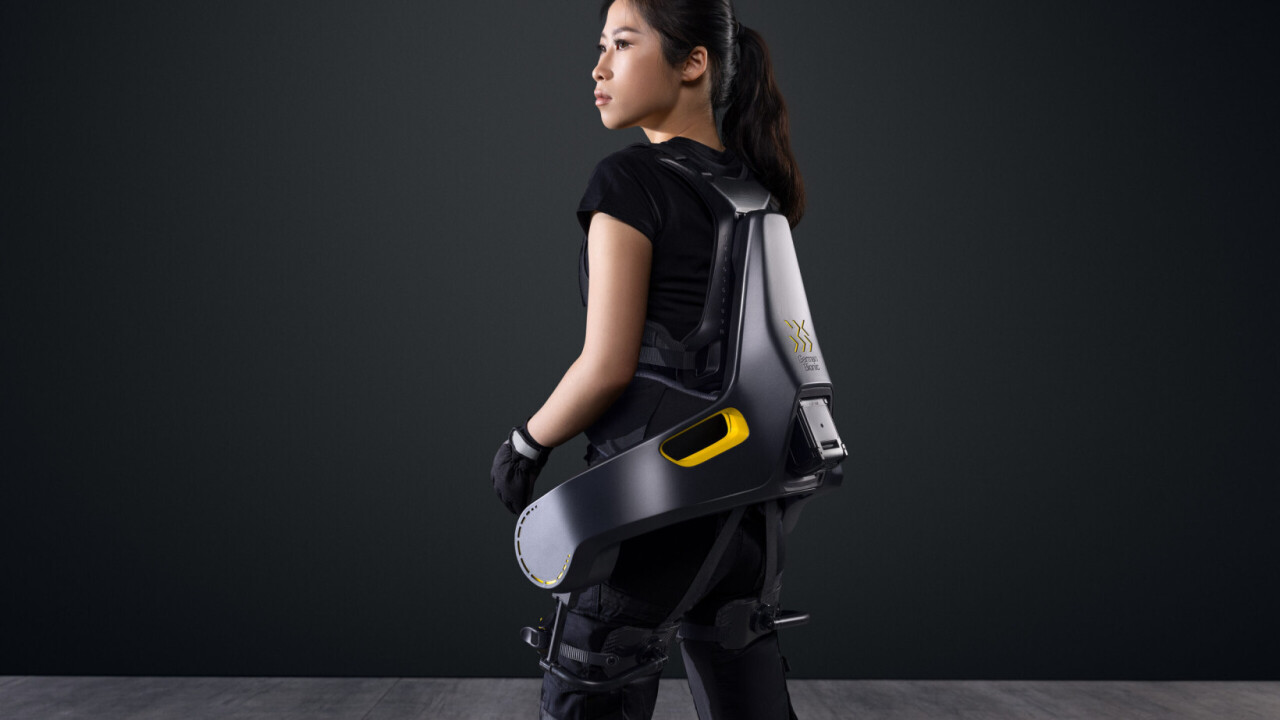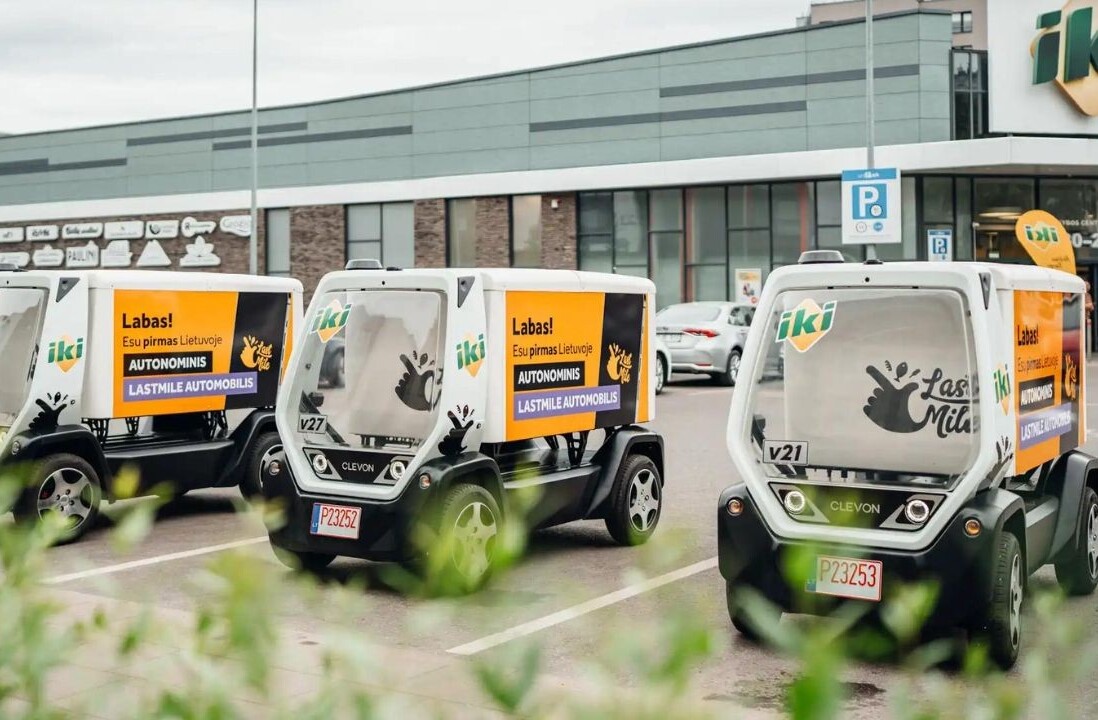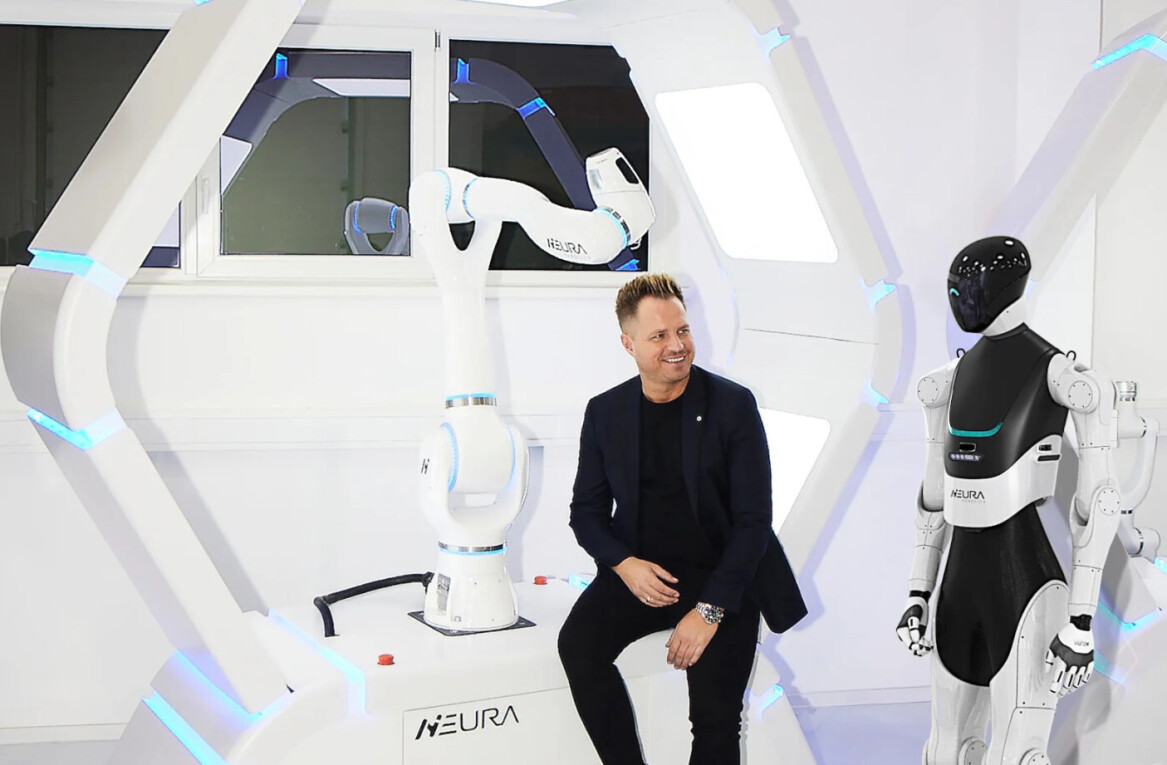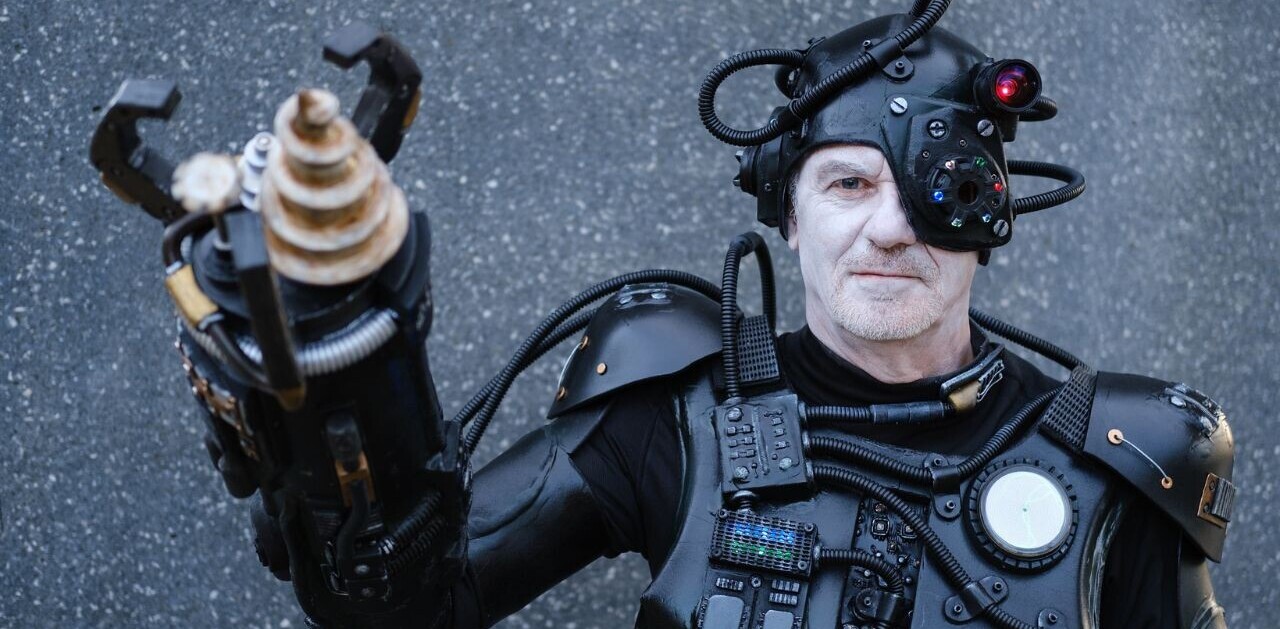
Move over Tony Stark, there’s a new player in town. Augsburg-based startup German Bionic has developed wearable exoskeletons that endow superhuman strength — although they are a little more modest than Iron Man’s.
Founded in 2017, the startup is one of several companies around the world developing exoskeletons to make physically demanding jobs easier. Whether for warehouse staff, elderly care professionals, or construction workers, “everyone can benefit from a little added support,” Norma Steller, CPO at German Bionic, tells TNW.
Germanic Bionic’s two commercially available exoskeletons — the Cray X and the recently launched Apogee (pictured) — are worn like a backpack. They are powered by electric motors, and sense when a user is moving, providing up to 30 kg of extra force to your back, core, and legs, when and where you need it.
“When you put on the device it can feel strange and heavy at first,” says Steller — the exoskeletons themselves weigh around 7kg. “But once the motors kick in it feels amazing. You feel strong, tall, and capable — it gives you this kind of feeling,” she said.

These are active exoskeletons: they use battery-powered motors and advanced control systems to enhance human strength, which differs from passive versions that provide purely mechanical support. While active systems are more complicated and expensive — $9,995 a pop for the latest Apogee model — they provide additional support to the lower back, the part of the body that generally takes the most strain from heavy lifting, says Steller.
The units also collect data and alert users to behaviours that increase the risk of injury, such as excessive repetition and improper lifting or twisting movements. Powered by AI, the suits learn your unique individual movement patterns, “supporting you how you need to be supported,” says Steller.
German Bionic has raised almost €45m in funding to date, more than any other European exoskeleton company. The startup predicts that the tech will be used for all manner of applications in just a few years’ time, and could even help the aged or disabled to regain mobility. The Cray X has already been trialled at a hospital in Berlin to help Sara Vaz Contreiraz, a nursing ward supervisor, in her physically intense work in the geriatric ward. “I’ve tried it and I must say I am extremely impressed,” she said.
There are an estimated 2.7 billion ‘deskless’ workers globally, with many working physically demanding jobs that put the body under serious strain and increase the risk of injury. A comprehensive EU-wide study found that three in five workers experience musculoskeletal disorders, the most common of which is back pain.
The EU workforce is also ageing and grappling with labour shortages, meaning there are more older people in physically demanding jobs and fewer people overall to spread the load — literally. In response, companies are looking for new ways to do more with less and increase the well-being of their workers, with some turning to exoskeletons as a potential solution. But why don’t they just invest in robots instead?
“10 years ago people believed that automation and robotics were a panacea for the labour crisis, but it hasn’t turned out that way,” Steller told TNW. “The reality is that automated solutions are still far more expensive than human labour, and are often inappropriate: most people would not want their elderly parent to be cared for by a robot or for a robot to replace a surgeon, for instance. These physically demanding jobs could, however, be assisted by robotic exoskeletons.”

Last year, UK tech retailer Currys invested over £250,000 in a fleet of German Bionic’s Cray X exoskeletons to assist warehouse workers, while in 2021, the UK’s National Health Service purchased 127 units of lower back exoskeletons to help nurses with patient care. German parcel delivery service DPD also uses the Cray X at some of its sites.
“First and foremost, the exoskeletons serve to protect the health of our employees,” says Ville Heimgartner, senior innovation project and sustainability manager at DPD. By protecting their workforce and preventing injury, logistics companies are also expected to see long-term cost savings from reduced claims.
In 2022, there were around 93,000 exoskeletons in use at workplaces across the world, and this number is expected to increase sevenfold by 2030. Despite currently high entry costs, the market is estimated to be growing at 41.3% a year, which will make it a nearly $2bn industry by 2025. By 2030, the revenue from sales of active exoskeletons is predicted to surpass $5bn, nearly twice as much as passive versions.
And there are an increasing number of companies cashing in on this emerging industry. US-based Ekso Bionics has developed an exoskeleton for construction workers focused on supporting the shoulders. French startup Wundercraft has developed a lower body exoskeleton to help patients recover from spinal cord injuries, and Spain’s Marsi Bionics has launched a gait exoskeleton for children with neuromuscular diseases.
Get the TNW newsletter
Get the most important tech news in your inbox each week.





